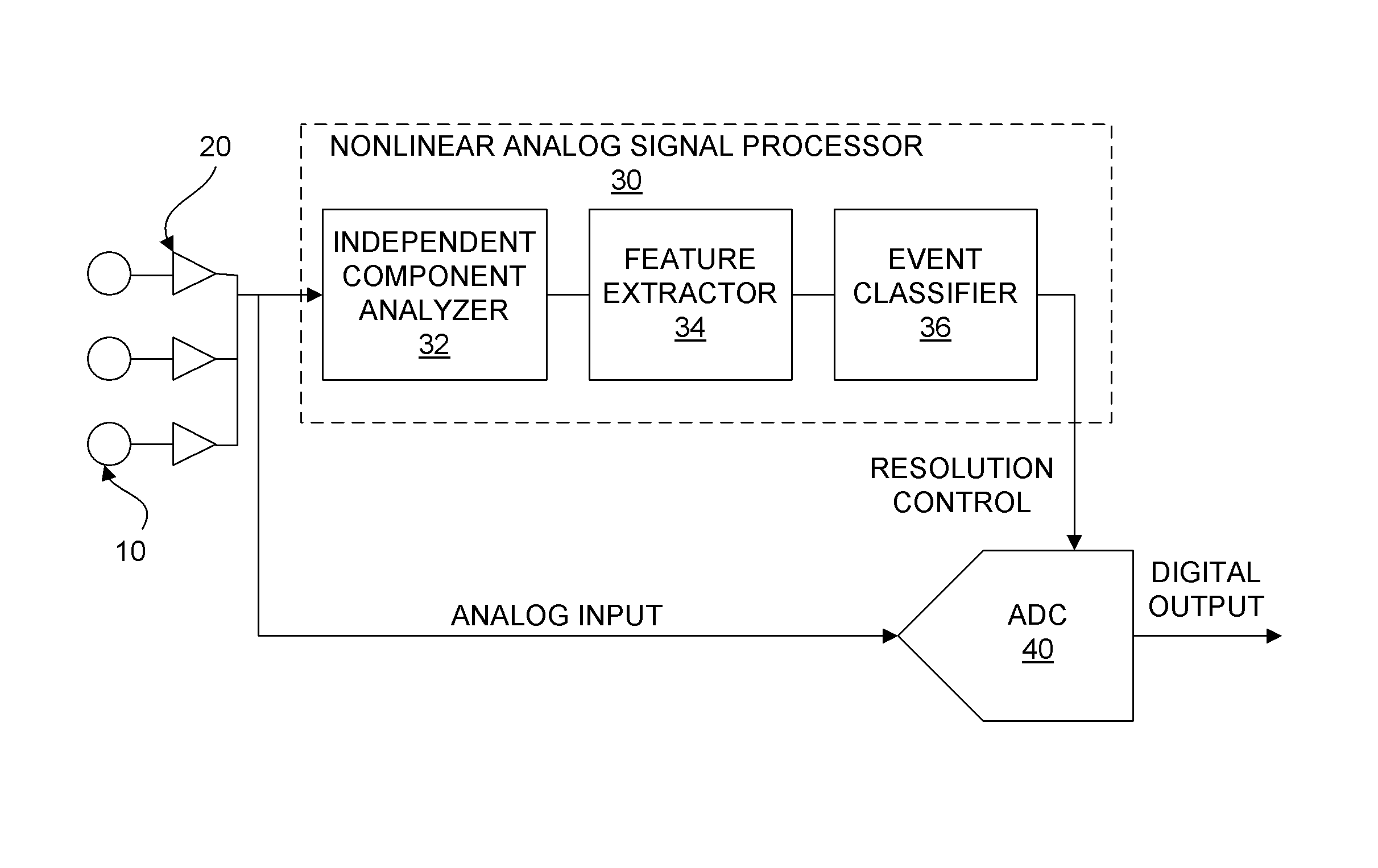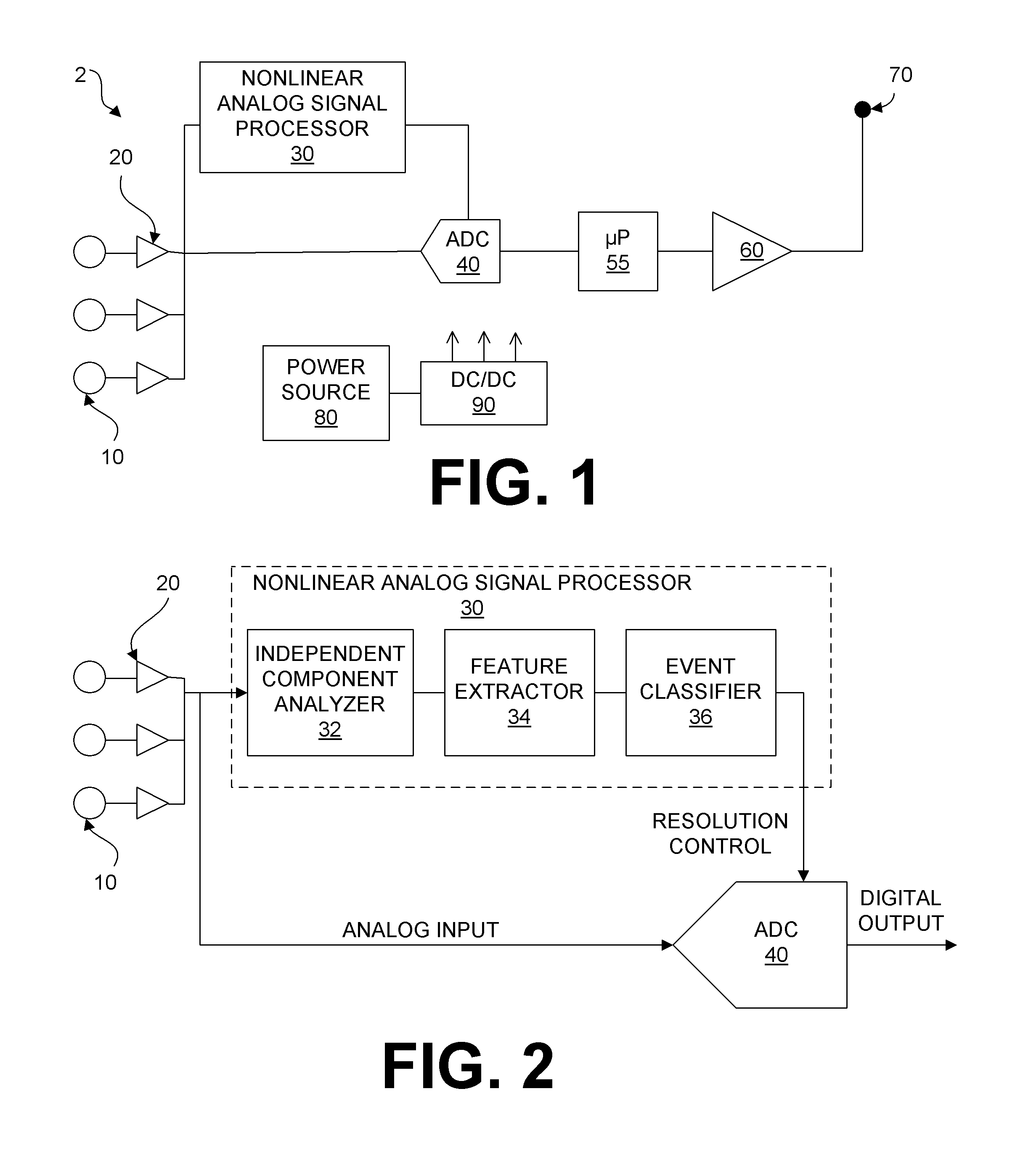Electroencephalography monitoring device having a self-adaptive analog-to-digital converter
a monitoring device and digital converter technology, applied in the field of electroencephalography monitoring devices, can solve the problems of large storage space, wasteful conversion of monitored signals, and large size of eeg monitoring devices
- Summary
- Abstract
- Description
- Claims
- Application Information
AI Technical Summary
Benefits of technology
Problems solved by technology
Method used
Image
Examples
Embodiment Construction
[0012]The present EEG monitoring device contains an analog-to-digital converter (ADC) for multiple channels of EEG signals. The ADC monitors the EEG signals and varies its conversion resolution depending on whether or not it has detected an event of clinical significance, such as, for example, an ictal episode. During clinically significant events, the resolution of the ADC is high to facilitate analysis by an expert clinician. It should be noted, however, that for the majority of the time, the resolution of the ADC remains low as a nonlinear analog signal processor monitors the EEG signals for the onset of an important event. It should be noted that in the EEG monitoring device the nonlinear analog signal processor is distinct from a (digital) microprocessor that occurs after the ADC in a signal processing chain, as shown by FIG. 1.
[0013]The ADC is intended for wearable and implantable EEG monitoring devices. By adopting its analog-to-digital conversion resolution accordingly, the ...
PUM
 Login to View More
Login to View More Abstract
Description
Claims
Application Information
 Login to View More
Login to View More - R&D
- Intellectual Property
- Life Sciences
- Materials
- Tech Scout
- Unparalleled Data Quality
- Higher Quality Content
- 60% Fewer Hallucinations
Browse by: Latest US Patents, China's latest patents, Technical Efficacy Thesaurus, Application Domain, Technology Topic, Popular Technical Reports.
© 2025 PatSnap. All rights reserved.Legal|Privacy policy|Modern Slavery Act Transparency Statement|Sitemap|About US| Contact US: help@patsnap.com



